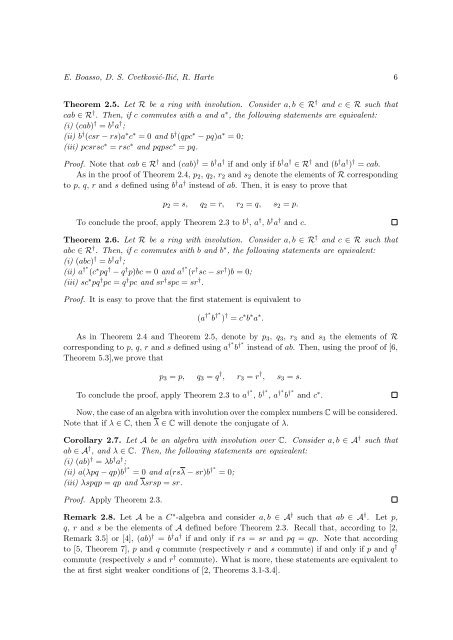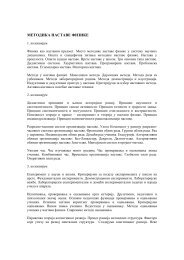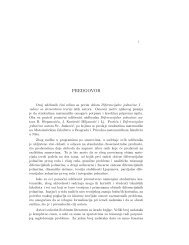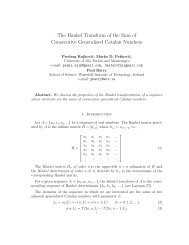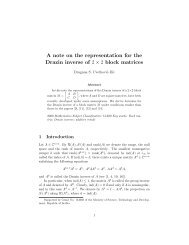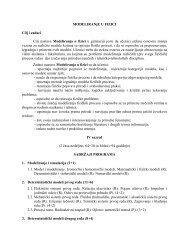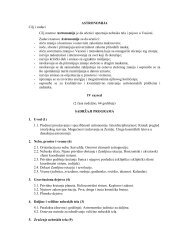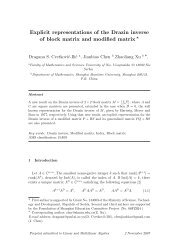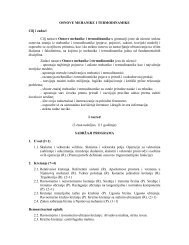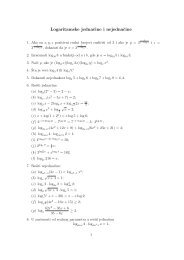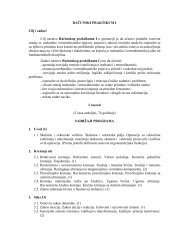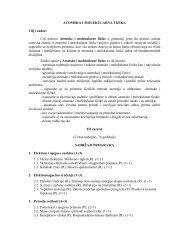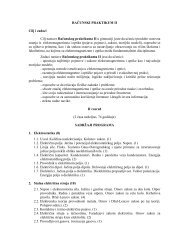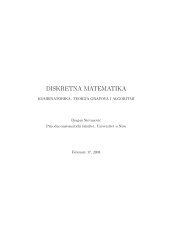On weighted reverse order laws for the Moore-Penrose inverse and ...
On weighted reverse order laws for the Moore-Penrose inverse and ...
On weighted reverse order laws for the Moore-Penrose inverse and ...
You also want an ePaper? Increase the reach of your titles
YUMPU automatically turns print PDFs into web optimized ePapers that Google loves.
E. Boasso, D. S. Cvetković-Ilić, R. Harte 6<br />
Theorem 2.5. Let R be a ring with involution. Consider a, b ∈ R † <strong>and</strong> c ∈ R such that<br />
cab ∈ R † . Then, if c commutes with a <strong>and</strong> a ∗ , <strong>the</strong> following statements are equivalent:<br />
(i) (cab) † = b † a † ;<br />
(ii) b † (csr − rs)a ∗ c ∗ = 0 <strong>and</strong> b † (qpc ∗ − pq)a ∗ = 0;<br />
(iii) pcsrsc ∗ = rsc ∗ <strong>and</strong> pqpsc ∗ = pq.<br />
Proof. Note that cab ∈ R † <strong>and</strong> (cab) † = b † a † if <strong>and</strong> only if b † a † ∈ R † <strong>and</strong> (b † a † ) † = cab.<br />
As in <strong>the</strong> proof of Theorem 2.4, p 2 , q 2 , r 2 <strong>and</strong> s 2 denote <strong>the</strong> elements of R corresponding<br />
to p, q, r <strong>and</strong> s defined using b † a † instead of ab. Then, it is easy to prove that<br />
p 2 = s, q 2 = r, r 2 = q, s 2 = p.<br />
To conclude <strong>the</strong> proof, apply Theorem 2.3 to b † , a † , b † a † <strong>and</strong> c.<br />
Theorem 2.6. Let R be a ring with involution. Consider a, b ∈ R † <strong>and</strong> c ∈ R such that<br />
abc ∈ R † . Then, if c commutes with b <strong>and</strong> b ∗ , <strong>the</strong> following statements are equivalent:<br />
(i) (abc) † = b † a † ;<br />
(ii) a †∗ (c ∗ pq † − q † p)bc = 0 <strong>and</strong> a †∗ (r † sc − sr † )b = 0;<br />
(iii) sc ∗ pq † pc = q † pc <strong>and</strong> sr † spc = sr † .<br />
Proof. It is easy to prove that <strong>the</strong> first statement is equivalent to<br />
(a †∗ b †∗ ) † = c ∗ b ∗ a ∗ .<br />
As in Theorem 2.4 <strong>and</strong> Theorem 2.5, denote by p 3 , q 3 , r 3 <strong>and</strong> s 3 <strong>the</strong> elements of R<br />
corresponding to p, q, r <strong>and</strong> s defined using a †∗ b †∗ instead of ab. Then, using <strong>the</strong> proof of [6,<br />
Theorem 5.3],we prove that<br />
p 3 = p, q 3 = q † , r 3 = r † , s 3 = s.<br />
To conclude <strong>the</strong> proof, apply Theorem 2.3 to a †∗ , b †∗ , a †∗ b †∗ <strong>and</strong> c ∗ .<br />
Now, <strong>the</strong> case of an algebra with involution over <strong>the</strong> complex numbers C will be considered.<br />
Note that if λ ∈ C, <strong>the</strong>n λ ∈ C will denote <strong>the</strong> conjugate of λ.<br />
Corollary 2.7. Let A be an algebra with involution over C. Consider a, b ∈ A † such that<br />
ab ∈ A † , <strong>and</strong> λ ∈ C. Then, <strong>the</strong> following statements are equivalent:<br />
(i) (ab) † = λb † a † ;<br />
(ii) a(λpq − qp)b †∗ = 0 <strong>and</strong> a(rsλ − sr)b †∗ = 0;<br />
(iii) λspqp = qp <strong>and</strong> λsrsp = sr.<br />
Proof. Apply Theorem 2.3.<br />
Remark 2.8. Let A be a C ∗ -algebra <strong>and</strong> consider a, b ∈ A † such that ab ∈ A † . Let p,<br />
q, r <strong>and</strong> s be <strong>the</strong> elements of A defined be<strong>for</strong>e Theorem 2.3. Recall that, according to [2,<br />
Remark 3.5] or [4], (ab) † = b † a † if <strong>and</strong> only if rs = sr <strong>and</strong> pq = qp. Note that according<br />
to [5, Theorem 7], p <strong>and</strong> q commute (respectively r <strong>and</strong> s commute) if <strong>and</strong> only if p <strong>and</strong> q †<br />
commute (respectively s <strong>and</strong> r † commute). What is more, <strong>the</strong>se statements are equivalent to<br />
<strong>the</strong> at first sight weaker conditions of [2, Theorems 3.1-3.4].


